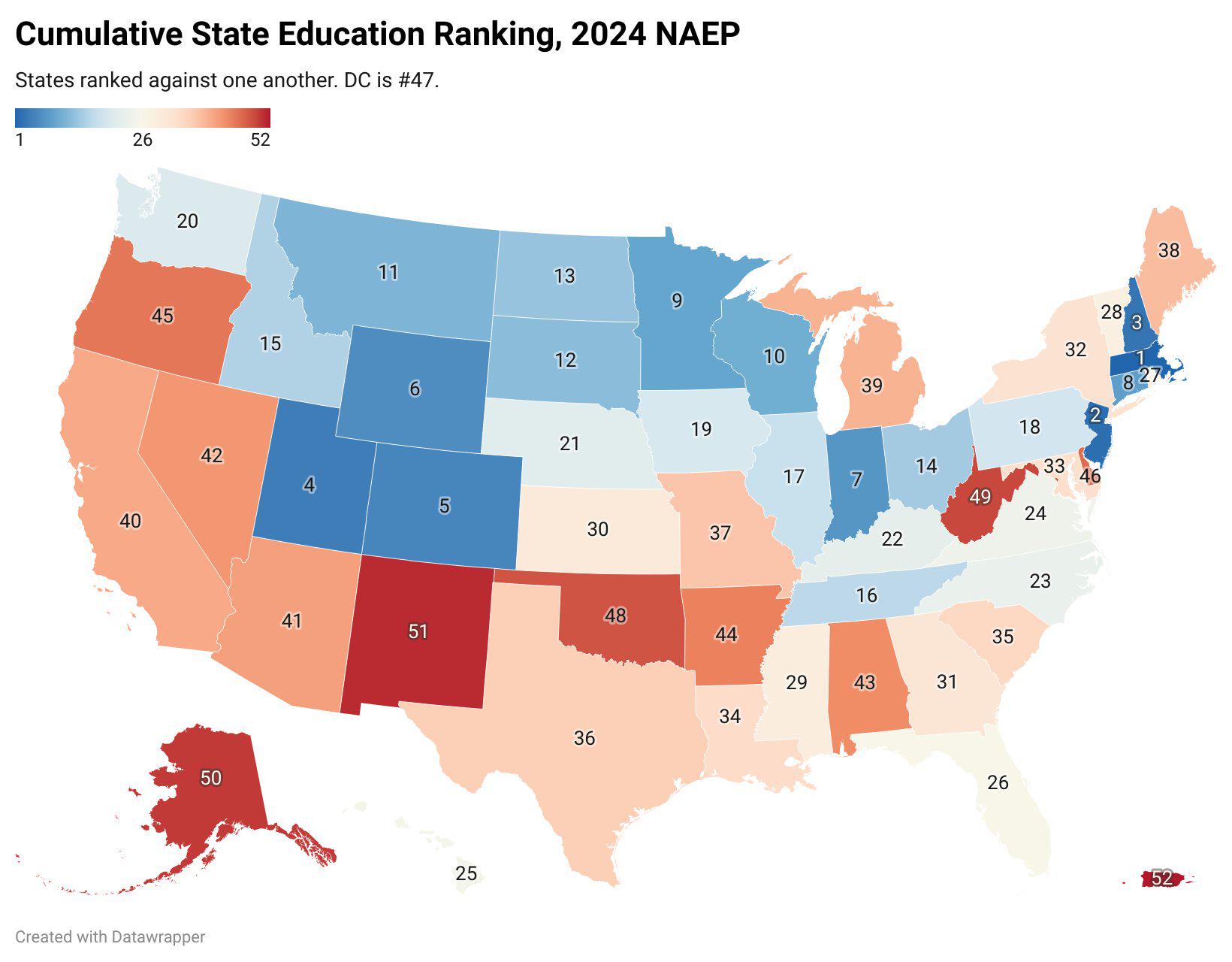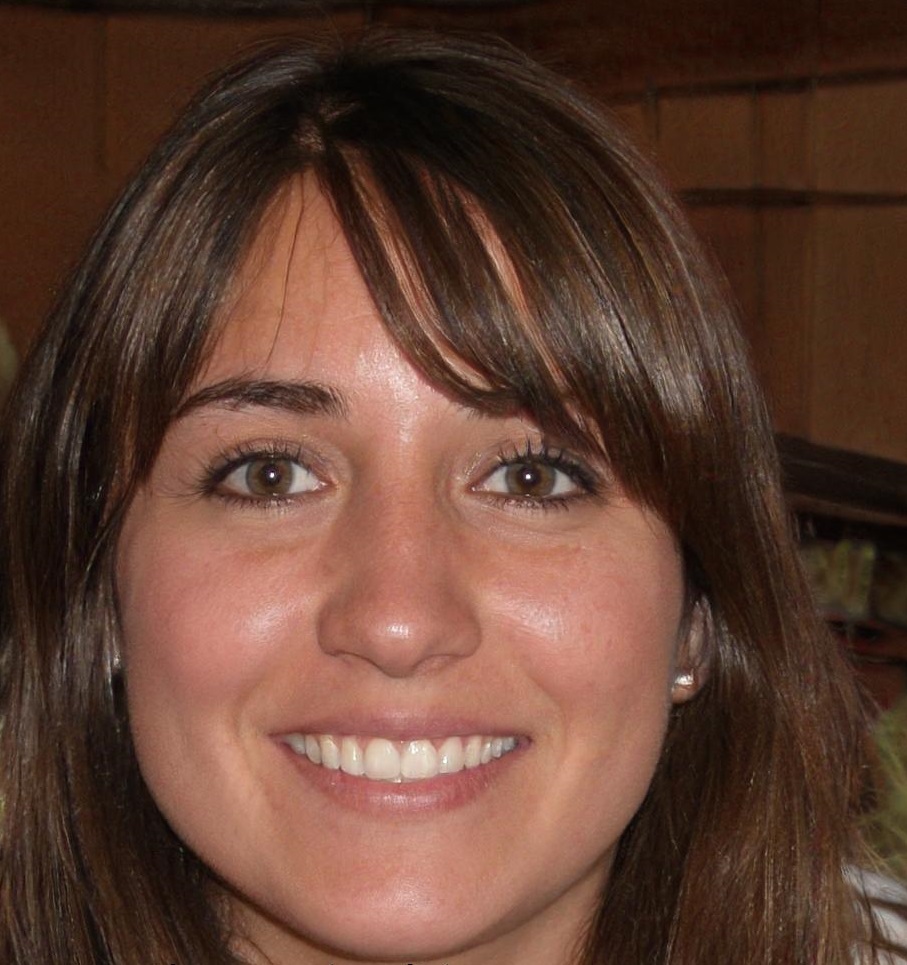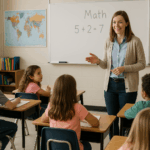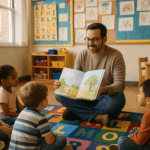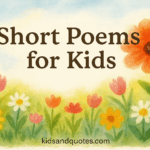Every year, the National Assessment of Educational Progress (NAEP) releases rankings based on student performance in 4th- and 8th-grade math and reading, and this year’s report card paints an interesting picture of where our education system stands.
Some states soared in academic achievement, while others are still struggling to close learning gaps. But beyond the numbers, what does this actually mean for teachers, students, and parents?
As a teacher from South Dakota, I can’t help but zoom in on where my own state stands on this map. South Dakota ranks 12th overall, which isn’t bad, certainly in the upper half; but it also means there’s room for improvement.
And trust me, as someone who spends every day in the classroom, I see both the successes and the struggles behind these rankings.
The best and worst performing states: A closer look
At the top of the rankings, Massachusetts (#1), New Jersey (#2), and Connecticut (#3) continue to dominate. These states have long been leaders in academic performance, benefiting from strong education policies, high per-pupil spending, and a culture that prioritizes rigorous learning.
On the other end, New Mexico (#52), Louisiana (#51), and Alaska (#50) ranked the lowest, highlighting ongoing struggles with educational funding, teacher shortages, and socioeconomic disparities.
One surprising observation? Western states like Colorado (#4) and Utah (#5) performed exceptionally well, despite often receiving less funding per student than states in the Northeast.
This suggests that educational quality isn’t just about funding—it’s about how schools allocate resources, engage students, and support teachers.
Where does South Dakota stand?
Coming in at #12, South Dakota performed better than most Midwestern states, which is a promising sign. But let’s be real, it’s not all smooth sailing here.
I’ve closely experienced how rural schools in South Dakota struggle with teacher shortages. Many of my colleagues work with limited classroom resources, and in some districts, students don’t have access to the same advanced coursework or extracurricular opportunities that students in top-ranked states enjoy.
But what South Dakota does have is a strong sense of community in education. I’ve taught kids whose parents, grandparents, and even great-grandparents attended the same school.
There’s an unmatched dedication from teachers and administrators who wear multiple hats; mentors, coaches, and counselors, because they care deeply about their students’ futures.
Still, if we want to break into the top 10 next year, we need to address some big challenges:
- Better funding for rural schools to improve access to technology and advanced coursework
- Teacher retention programs that encourage young educators to stay in South Dakota instead of moving elsewhere.
- More student support services for those who need help catching up post-pandemic.
What do these rankings really mean?
Rankings like these are important, they highlight educational strengths and weaknesses, but they don’t tell the whole story. A student’s success isn’t just about the state they live in; it’s about the teachers, the parents, and the support systems in place.
I’ve had students who come from families struggling financially but excel because they’re motivated and supported. I’ve also seen kids in well-funded districts fall behind because they lack proper guidance. The truth is, numbers don’t define our students, opportunity does.
That’s why it’s critical that, as teachers and parents, we don’t just focus on where our state ranks, but on what we can do locally to create a better learning environment for every child.
Final thoughts: Moving forward
The 2024 NAEP rankings give us a snapshot of where we are, but they should also serve as motivation to improve. Whether your state is ranked #1 or #52, there’s always work to be done.
For South Dakota, we’re in a good but not great place. And I, for one, would love to see our state break into the top 10. That starts with conversations like this, where we take an honest look at what’s working, what’s not, and what we can do to make education better for every child.
What do you think? How does your state’s ranking compare to what you see in classrooms every day? Let’s talk about it.
(Image Courtesy: Reddit)
